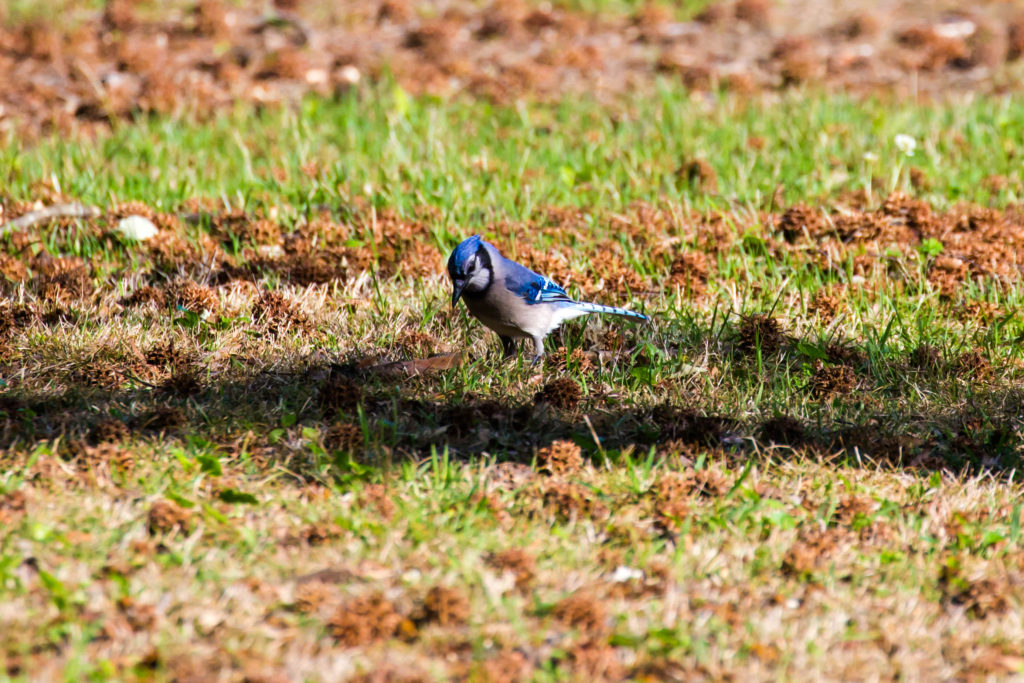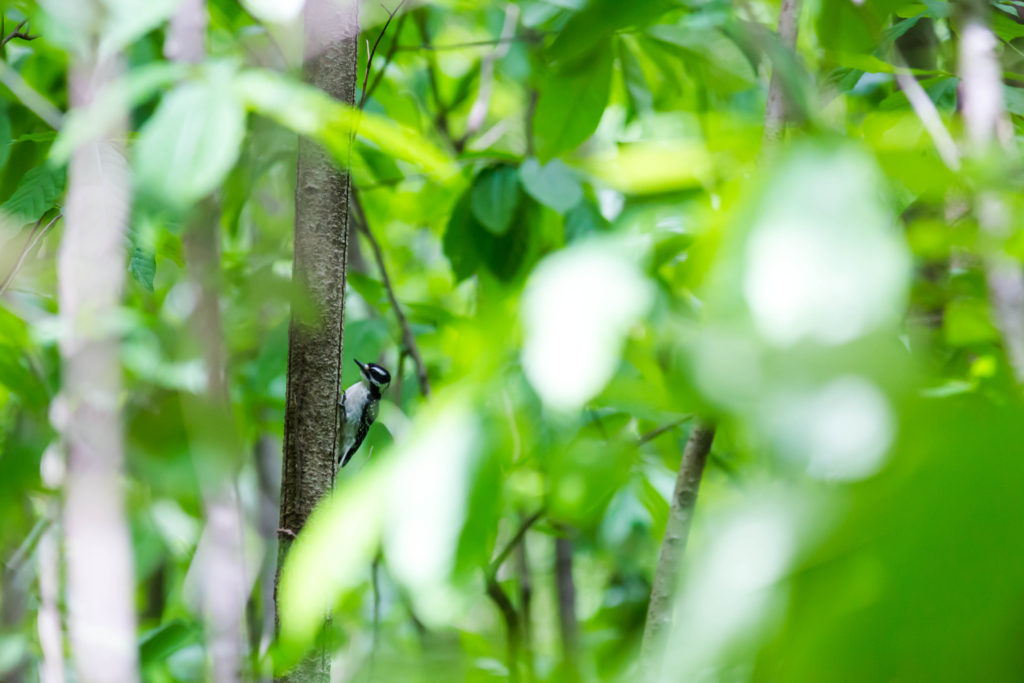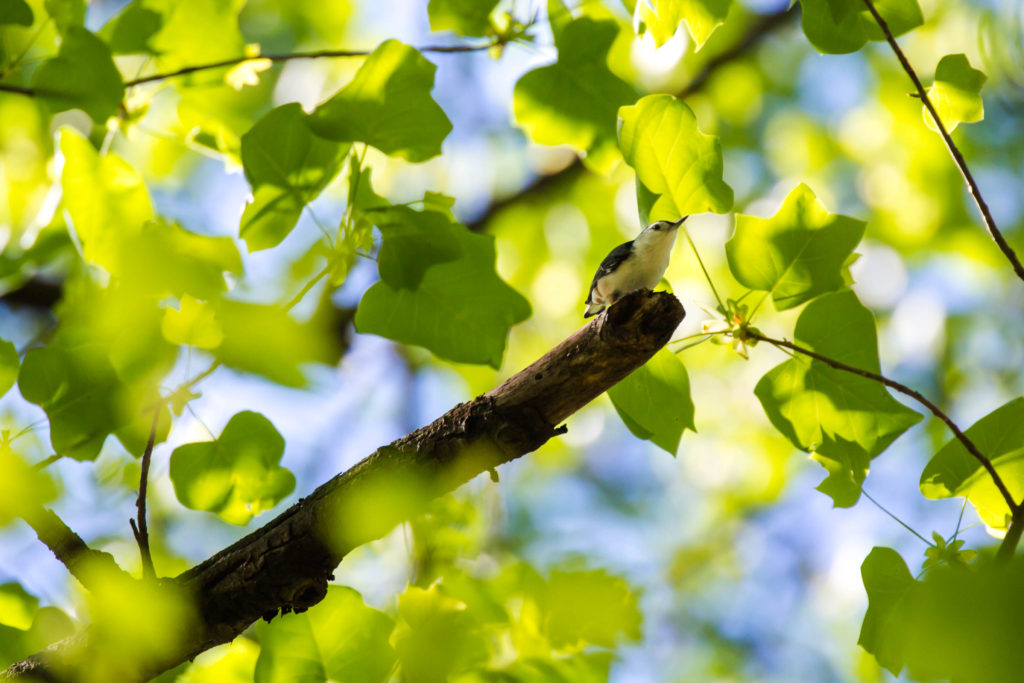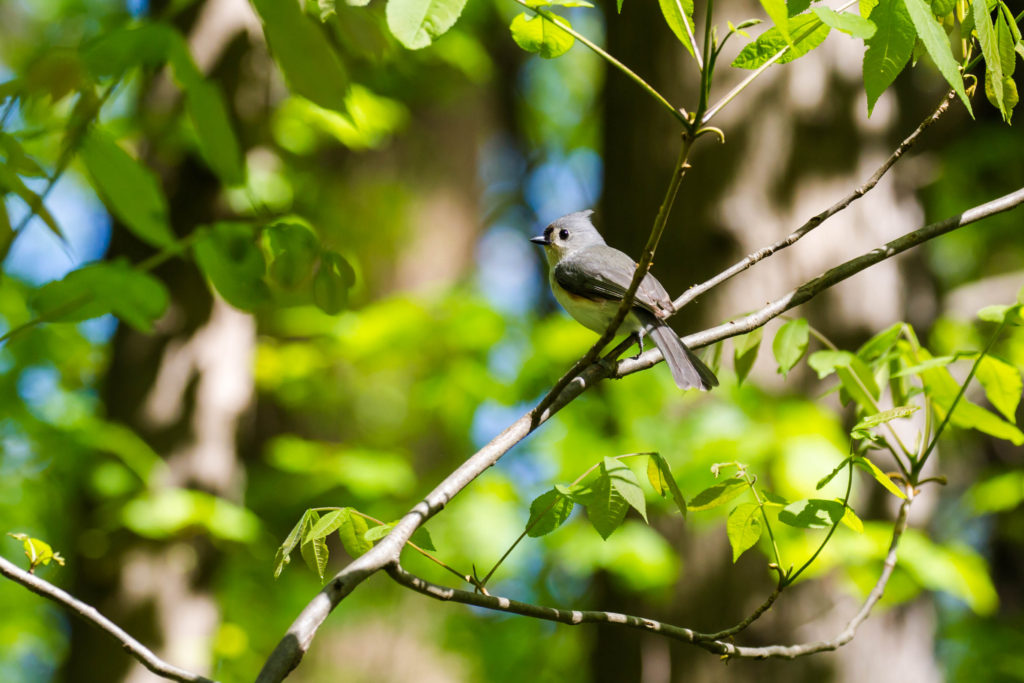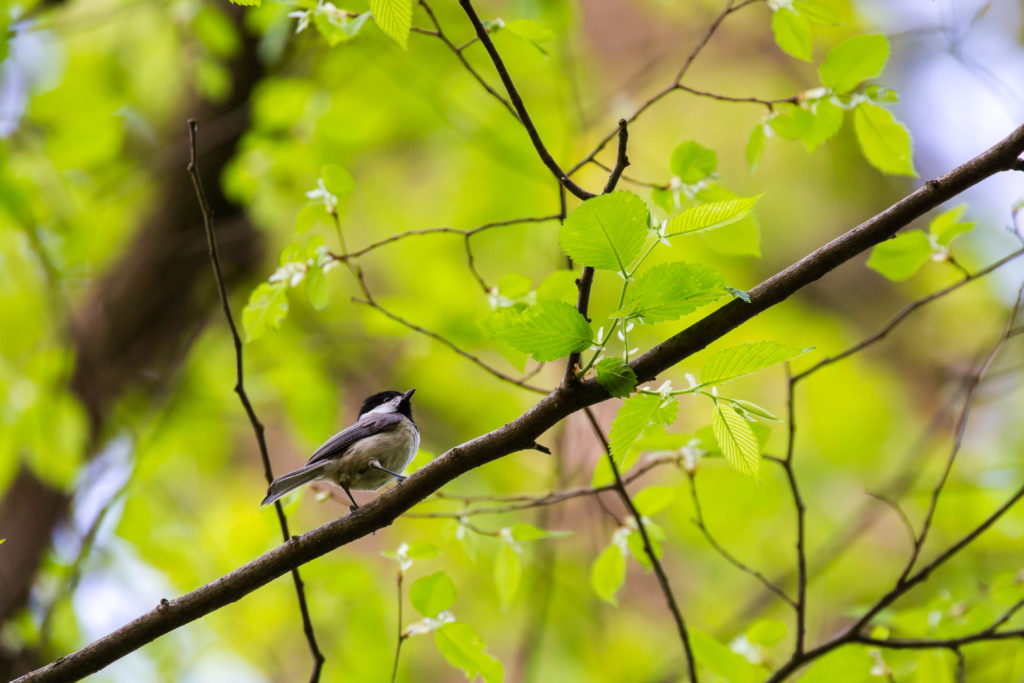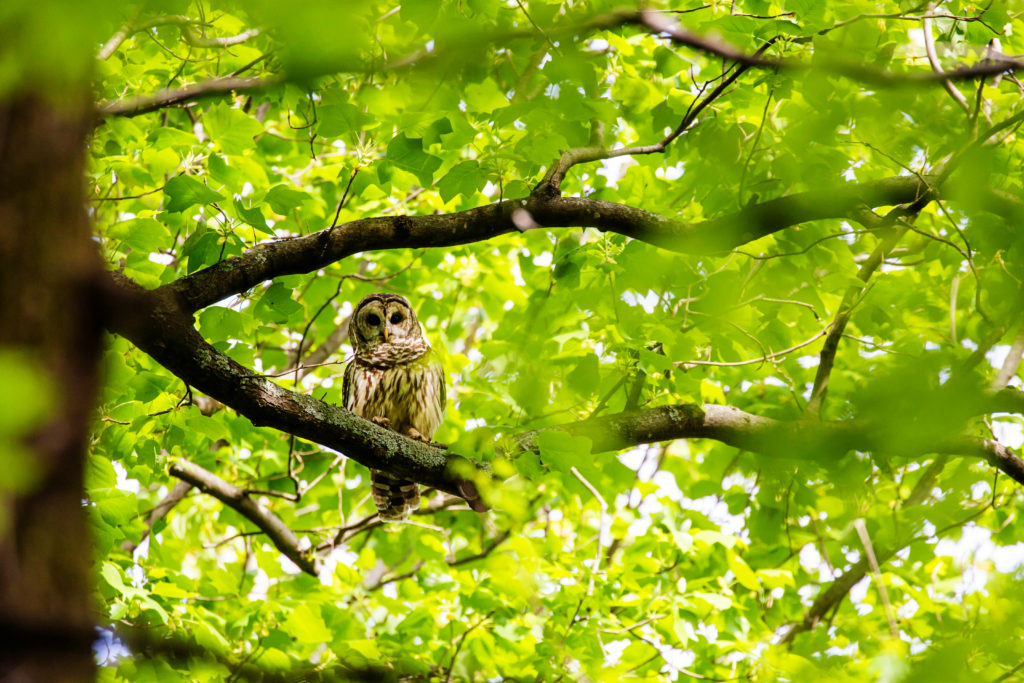Bucks for Birds #2: Weekend Update
In the quest to see as many bird species as possible, I took three walks in the Old Forest this weekend and then made it my first stop on Monday morning. On the first walk, I was accompanied by several nice folks as part of our Old Forest Science Fair, and we added a couple of species to the tally while seeing a lot of Eastern tiger swallowtail butterflies. (I should consider doing a Scratch for Swallowtails promotion next spring–no telling how many invasives we could remove that way!)
On my second Saturday walk, my most notable find wasn’t a bird–it was a White M Hairstreak butterfly. This species is an iridescent blue in flight (almost like a tiger beetle) and a nondescript gray when perched. Its habitat is oak forests, and we’re right in the middle of its range, so I was surprised to discover that it had also never been recorded in Shelby County before! Any aspiring naturalist will tell you that no matter how long you’ve been at it, getting a county record is a thrill. And this butterfly happened to be in the exact same spot as my first-ever county record–a painted skimmer dragonfly. The oak trees aren’t regenerating in the forest gaps, but we sure are attracting some interesting insects.
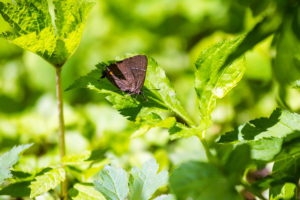 So while that doesn’t count toward the Bucks for Birds total, it was exciting for me so I thought I’d share.
So while that doesn’t count toward the Bucks for Birds total, it was exciting for me so I thought I’d share.
Now to the birds! I’m keeping my eye on Birdcast to see what’s coming up next, and my guess is that we’ll start to see the showy warblers coming in next week. In the meantime, I’m going to focus on getting as many of the resident species as possible before I have to start focusing solely on chasing down flashes of yellow and strange songs. I’m also about 75% sure a ruby-throated hummingbird buzzed over my head this morning, so that’s my number one target for this week.
As to what I’ve actually seen…
Ruby-crowned kinglets are one of the smallest birds in the forest. While they hop frenetically around in search of insects, they’re not particularly shy around people. Their willingness to be close to me balances out the fact that they won’t stop moving, so I find them fun to photograph. A second type of warbler, the golden-crowned, is even smaller. It’s easier to see the crowns on a golden than a ruby, but I took a shot that shows where it pops up when the birds are agitated. This bird is a winter resident who will be moving north or west for the summer.
I’ve seen a ton of blue jays this week, mainly building nests around the golf course. I have exactly zero good photos of them. (I can tell that at the end of this project, I’m going to want to come back and post actually-decent photos of previously-spotted species.) We may have blue jays to thank in part for our beautiful oak forest: they can store away more than 100 acorns a day, effectively planting their own forests in their efforts to hide food for the winter.
Last week I posted a hairy woodpecker; on Saturday’s bird walk we saw an industrious downy woodpecker foraging in box elder trees. Sometimes when you hear a very loud drumming in the woods, you might be surprised to see this small bird making such a big noise. The drumming is a substitute for singing rather than a noise it’s making to search for food. It’s about communication, not lunch.
There are two birds found in Overton Park that I think sound like someone mockingly laughing: one is the fish crow, and the other is the white-breasted nuthatch. The crow says a variation of “ha-ha,” and the nuthatch is a wilder-sounding “ha-ha-ha-ha-ha-ha!” Because they’re such small birds, it’s much easier to find them by listening to the laugh-song than to just stumble across one in your line of sight. They’re called nuthatches because they like to take large seeds or nuts and slam them against trees to burst the shells.
Another bird that loves large seeds is the tufted titmouse, which carries its bounty to a tree branch and hammers away at it until it breaks. This bird was foraging in some buckeye trees with a second titmouse, perhaps looking for a nesting spot. We should be seeing titmouse babies fairly soon!
The Carolina chickadee is in the same family as the titmouse, and their screechy calls are easy to mix up. They’re social birds, often found in flocks with several types of small birds. I love watching them fly, as they rarely fly straight. They have an elegant roller-coaster-style motion.
This morning as I was watching a couple of wrens in a call-and-response dance, there was a ruffling of leaves over my head and a large dark brown shape crossed the sky. It was a barred owl! In some years, I see no owls at all, and other times I have good luck with them, but there’s never any guarantee that I’ll find one. So I’m very happy to be able to add it to this list. These birds live in our area year-round, but because they’re mostly active at night and their feathers are an effective camouflage, they can often escape our notice. It’s always such a treat to see one.
We are now at 56% of our pledge goal, which we set at a modest $2,500 for Bucks for Birds. Our 2017 invasive-removal expenses are closer to $20,000, so if forest health is a cause near and dear to you (or if you just want to keep the bird photos coming), please make a pledge. Any amount will help!
The list to date (19):
- American robin
- Barred owl
- Blue-gray gnatcatcher
- Blue jay
- Brown-headed cowbird
- Carolina chickadee
- Carolina wren
- Downy woodpecker
- Hairy woodpecker
- Hermit thrush
- Myrtle warbler
- Northern cardinal
- Northern parula
- Orange-crowned warbler
- Palm warbler (last week’s guess was confirmed by the iNat community)
- Ruby-crowned kinglet
- Tufted titmouse
- White-breasted nuthatch
- White-throated sparrow
(Did you notice that my photo quality went up after the blue jay picture? I want to put in a plug here for one of my favorite Memphis-based businesses, LensRentals. If you’ve always wanted to try bird photography but don’t have the budget to buy a $2,000+ lens, you can rent one from LR and pick it up at their Cordova office to save on shipping. It’s an affordable way to see which lenses you enjoy using. I wasn’t loving the results with my own equipment this month, so I rented a 100-400mm zoom to get more distance, and I’m much happier.)


